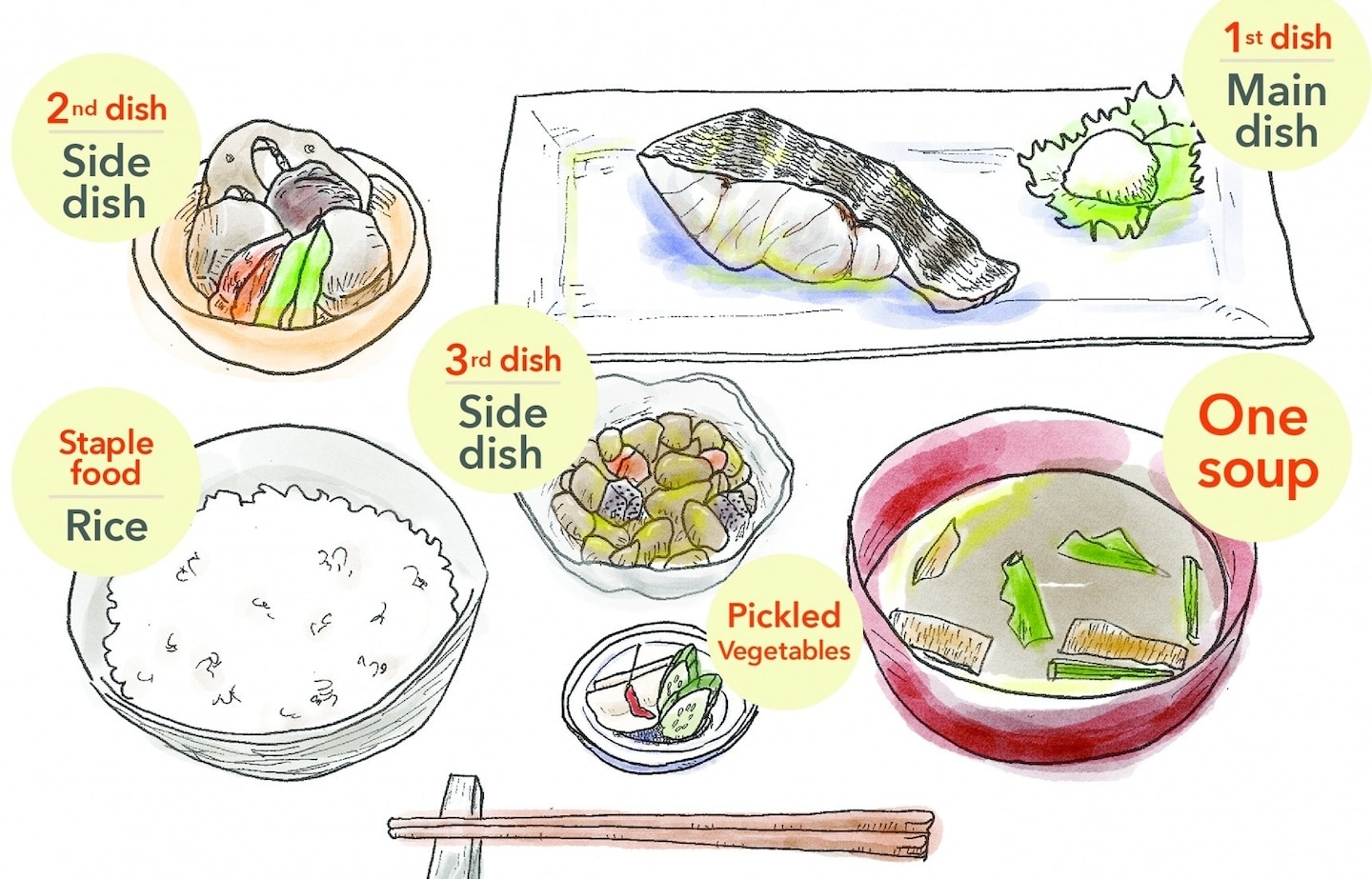What is Ichiju-Sansai?

World-famous Japanese foods like sushi, ramen and sukiyaki are actually not frequently served at the dinner table in ordinary Japanese households. To find more typical home cooking, we need to look at a kind of Japanese cuisine known as ichiju-sansai.
By Ichiju-Sansai ProjectWhat is ichiju-sansai?
https://www.youtube.com/watch?v=nwxL2N44MDc
Washoku, or Japanese cuisine, has been recognized by UNESCO as an item of Intangible Cultural Heritage. The foundation of Japanese cuisine since ancient times has been meals made up of one type of soup and three other dishes (one main dish and two sides). In fact, ichi means one and ju means soup, while san is three and sai refers to dishes—so ichiju-sansai literally means, "One soup, three dishes." Rice and pickles are always served as well, but the soup and other dishes are free to change depending upon the season and what you'd like to eat.
What's so good about ichiju-sansai?
One reason why ichiju-sansai is so beloved by Japanese people is how healthy it is. This set menu allows people to eat rice for energy-giving carbohydrates and soup for hydration, while the nutrition of the accompanying dishes balances everything out. Through the many nutritious substances mixing in the stomach, your digestion and ingestion improve, which has the effect of letting you discharge excess fat, sugar and salt. That's why it's so healthy for you!
The principles of ichiju-sansai
Fermented foods such as miso and soy sauce, which are an indispensable part of Japanese cuisine, help keep the digestive system in good condition. Also, using a richly flavored dashi (soup stock) allows us to give a depth of flavor to our dishes while keeping salt levels to a minimum.
Another thing to keep in mind is whether the ingredients being used are in season. Naturally, we want to capture all those wonderful nutrients and use them to boost our own immune systems.
How do you make ichiju-sansai?
The key point is to ensure that there are no clashes between the ingredients and the cooking methods used. Main dishes usually consists of protein-rich foods such as fish, egg or tofu, whereas side dishes can be potatoes, vegetables, beans, mushrooms, seaweed, etc., all of which provide vitamins, minerals and fiber.
With the soup (often miso soup), it's possible to incorporate every kind of nutrient in one go, and heating up the vegetables makes it easier to eat them in large amounts. This helps us take on all the fiber we need.
With ichiju sansai, all you have to do to maintain good nutrition is to combine the in-season fish, meat and vegetables you want to eat, and cook them while being conscious of overall quantity and the number of dishes to be prepared. Why not try making ichiju-sansai a part of your healthy and delicious diet?
For more information about ingredients and recipes, please look here!
Sources:
Ministry of Agriculture, Forestry and Fisheries:
http://www.maff.go.jp/j/keikaku/syokubunka/culture/wasyoku.html
Hokuriku Regional Agricultural Administration Office:
http://www.maff.go.jp/hokuriku/safe/shokuiku/pdf/3_1_0411_a.pdf
Society for Taste of Japan Studies:
https://www.umamikyo.gr.jp/recipe/category_01_2.html


